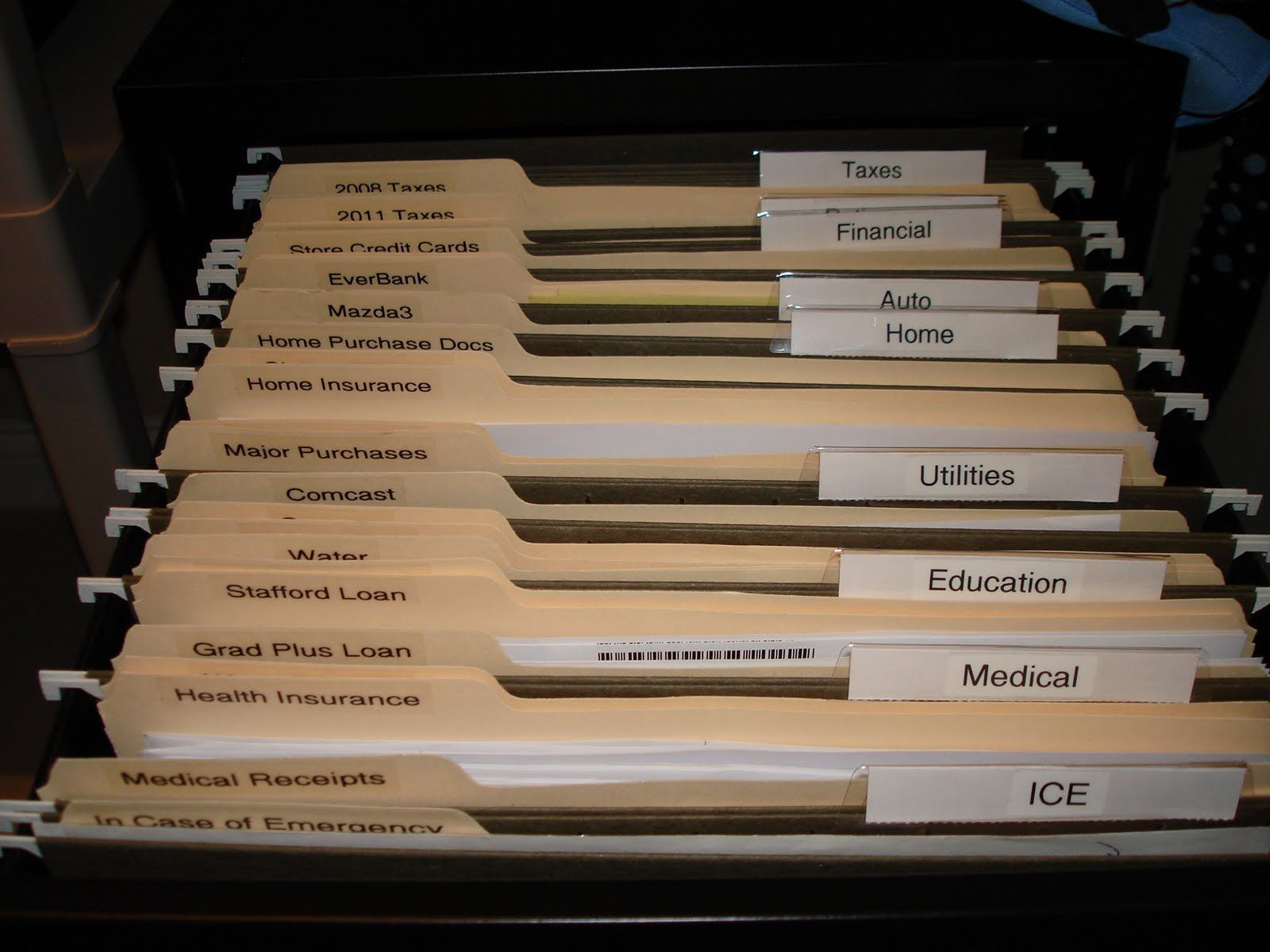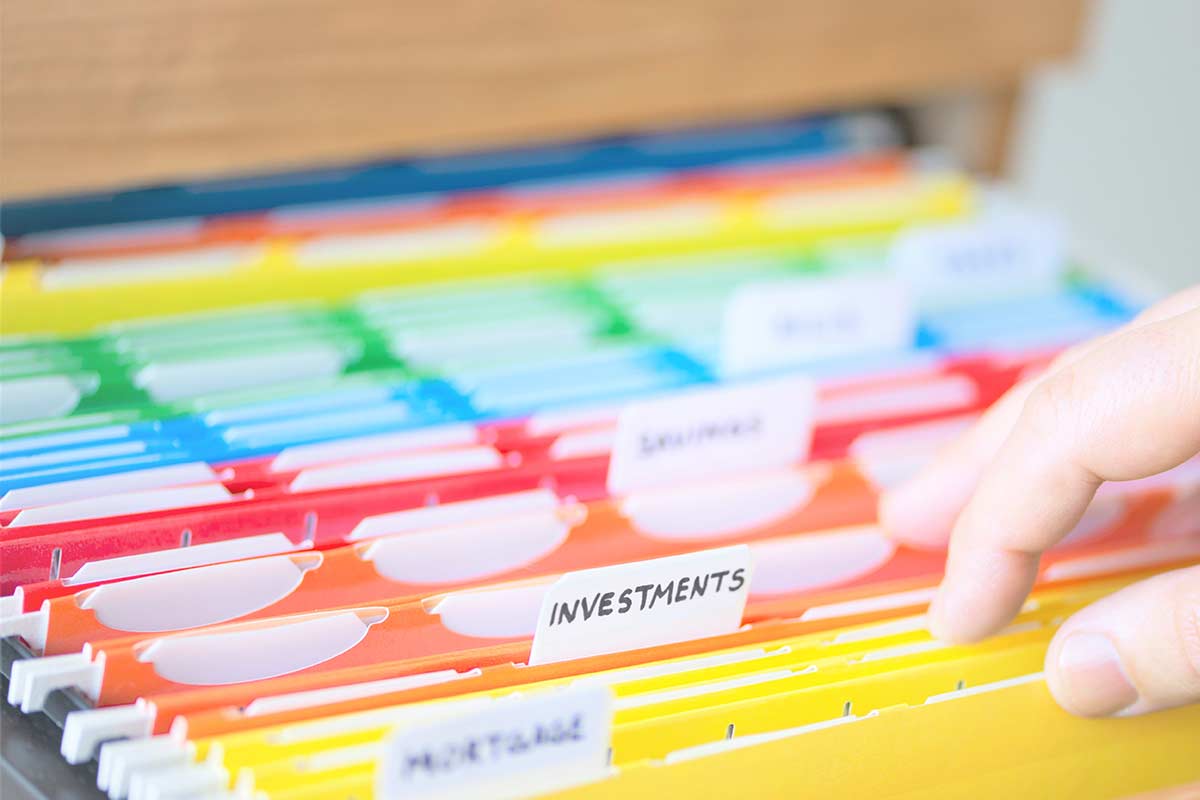Decluttering and Sorting

Before you start organizing your file cabinet, it is essential to declutter and sort your files. This step allows you to identify unnecessary documents and create a clear picture of what you need to keep and where it should be stored. Think of this as a spiritual cleansing of your paperwork, allowing you to release what no longer serves you and create space for the important things.
Identifying and Discarding Unnecessary Documents, How to organize your file cabinet at home
Before you start organizing your file cabinet, it is essential to identify and discard unnecessary documents. This will help you to create a more efficient and organized system for managing your files.
“Let go of what no longer serves you, whether it is a thought, a belief, a relationship, or a material possession. The more you release, the more space you create for new opportunities and blessings to enter your life.”
- Expired Warranties: Warranties have a limited duration, and keeping expired warranties only clutters your files. You can safely discard them.
- Duplicate Receipts: If you have a digital record of your receipts, you can discard the physical copies. You can also consider keeping receipts only for major purchases, like appliances or electronics. This will help you avoid clutter and unnecessary paperwork.
- Outdated Documents: This includes old tax returns, financial statements, or medical records. Check your state and local laws for guidelines on how long you need to keep certain documents.
- Unnecessary Junk Mail: Junk mail is often filled with promotional offers, coupons, and other irrelevant information. Discard it immediately.
Choosing the Right Filing System

Now that you’ve decluttered and sorted your files, it’s time to choose a filing system that works best for you. The right system will make finding what you need quick and easy, allowing you to focus on the tasks at hand.
Benefits of Color-Coding
Color-coding your file folders can bring order and visual clarity to your filing system. Assigning specific colors to different categories, such as personal, financial, or work-related documents, helps you quickly identify and locate the information you need. For example, you might use blue for personal documents, green for financial records, and yellow for work-related files. This visual organization helps streamline your filing process and promotes efficient retrieval.
Different Filing Systems
There are several different filing systems you can choose from. The best system for you will depend on your individual needs and preferences.
- Alphabetical Filing: This system organizes files alphabetically by name, subject, or . It’s a simple and intuitive system, but it can be challenging to find specific documents if you don’t remember the exact name or subject.
- Chronological Filing: This system arranges files in order of date, from oldest to newest. It’s useful for tracking the history of events or transactions, but it can be difficult to find specific documents if you don’t know the exact date.
- Numerical Filing: This system assigns a unique number to each file and organizes them in ascending order. It’s a highly efficient system for large amounts of data, but it can be challenging to remember the specific number for each file.
Creating a Customized Filing System
A personalized filing system is essential for efficient organization. Consider your specific needs and preferences when designing your system.
- Identify your most frequently accessed files: These files should be easily accessible and prominently displayed in your filing system. You might even consider creating a separate “hot folder” for these files.
- Categorize your files: Create categories that make sense for your needs. This might include personal, financial, work-related, or hobby-related files.
- Use subcategories: Within each category, you can create subcategories to further organize your files. For example, within the “Financial” category, you might have subcategories for “Taxes,” “Investments,” and “Credit Cards.”
Organizing the File Cabinet: How To Organize Your File Cabinet At Home

Now that you’ve decluttered, sorted, and chosen a filing system, it’s time to organize your file cabinet. Think of this as creating a sanctuary of order within your home, a place where every document finds its rightful place.
Arranging File Folders
Arranging file folders within the cabinet drawers is a crucial step in maximizing efficiency and ease of access. The following tips will help you create a system that works for you:
- Alphabetical Order: This is the most common and straightforward method. Folders are arranged alphabetically by subject, name, or other relevant criteria. This ensures you can quickly find what you need.
- Chronological Order: If you deal with documents that are date-sensitive, arranging folders chronologically (oldest to newest) can be helpful. This method is particularly useful for financial records, tax documents, or legal papers.
- Categorical Order: For specific categories like “Home Improvement,” “Health,” or “Travel,” you can group related folders together. This is particularly useful if you have a large volume of files within a particular category.
Maximizing Space and Ensuring Easy Access
A well-organized file cabinet maximizes space and makes finding files effortless. Consider these tips:
- Utilize Vertical Space: Use vertical file folders that stand upright, maximizing the drawer’s height. This allows you to store more files in a single drawer.
- Hanging Folders: Invest in hanging file folders that suspend from the drawer’s rails. These folders provide greater stability and prevent papers from spilling out.
- Use Dividers: Place dividers within the drawers to separate categories or groups of files. This allows for quick visual identification and easy access.
- Utilize Drawer Space: Consider using drawer organizers to create smaller compartments within the drawers. These organizers can help you categorize and store smaller items, such as envelopes, receipts, or business cards.
Labeling File Folders and Drawers
Clear and concise labeling is essential for a well-organized file cabinet. Use these suggestions:
- Consistent Labeling: Use a consistent labeling system throughout the file cabinet. Choose a font style and size that is easy to read.
- Descriptive Labels: Labels should clearly indicate the contents of the folder or drawer. Avoid using vague or ambiguous terms.
- Color-Coding: Use color-coding to visually distinguish different categories or groups of files. This can make it easier to find specific folders.
- Labeling Tools: Use label makers or computer-generated labels for professional-looking and durable labels.
How to organize your file cabinet at home – Organizing a file cabinet at home can be a daunting task, but with a structured approach, it can become manageable. One strategy is to categorize files by subject, date, or project, ensuring that related documents are grouped together. Similar to this, utilizing vertical space in your bathroom can enhance organization, and tall bathroom wall cabinets uk offer an effective solution.
Just like organizing your files, these cabinets provide dedicated storage for toiletries and other bathroom essentials, keeping your space tidy and accessible.
Organizing your file cabinet at home is similar to organizing a bathroom. Just as you might want to designate a specific drawer for toiletries, you can allocate sections in your file cabinet for different categories of documents. For instance, a designated section for important documents, such as birth certificates or insurance policies, can be particularly helpful.
Similarly, you might consider a dedicated space for bills and receipts. When looking for a stylish and functional solution, a target white bathroom cabinet could provide a neat and organized storage space for your bathroom essentials. Returning to the file cabinet, labeling each section with clear, concise labels will make it easier to locate specific files quickly.
